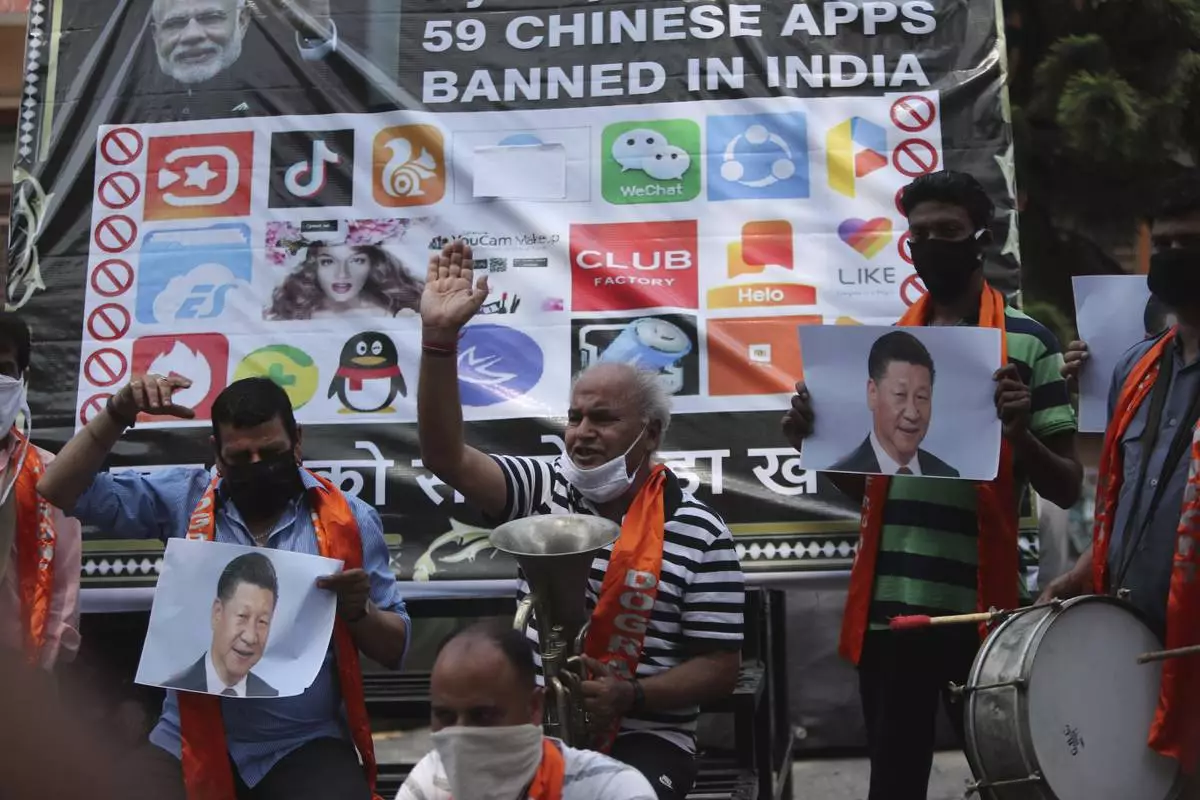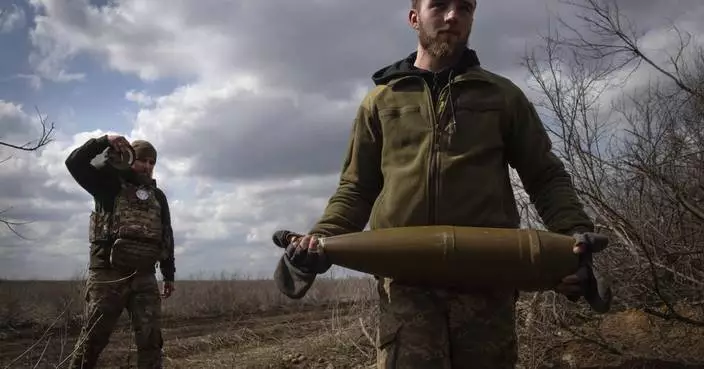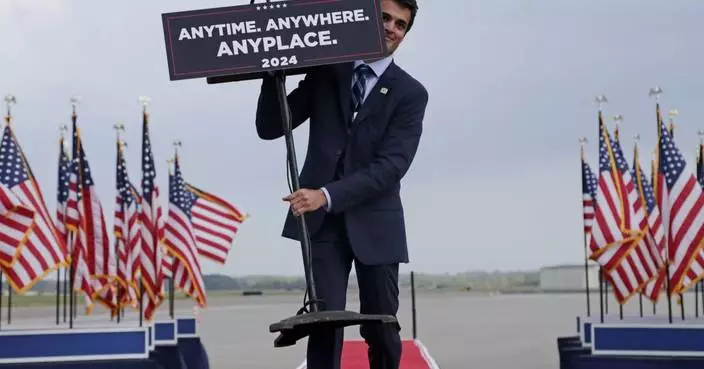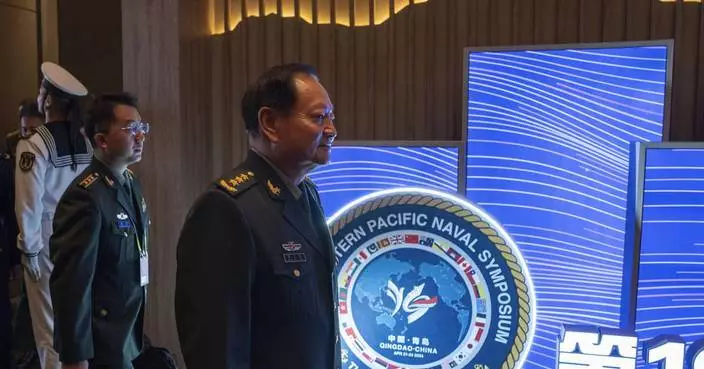A Connecticut police officer who opened fire on an unarmed couple's car, seriously wounding a woman, was charged Monday with assault and reckless endangerment.
State's Attorney Patrick Griffin said in his report that Hamden officer Devin Eaton showed "an extreme indifference to human life" and that the use of force April 16 in New Haven was not justified.
Eaton, 29, who has been on the force for three years, posted $100,000 bail and was ordered to appear in court Oct. 28 to face one count of first-degree assault and two counts of first-degree reckless endangerment. Messages seeking comment were left for him and his attorney Monday.
The shooting sparked several protests in New Haven and neighboring Hamden and prompted calls from area clergy and activists for two officers involved in to be fired.
According to police, Eaton and Yale University officer Terrance Pollock both opened fire on the car, which matched the description of one involved in a reported attempted armed robbery, after the driver, Paul Witherspoon III, got out abruptly. Eaton's body camera video shows Witherspoon, who was not injured, starting to exit the car and appearing to raise his hands when Eaton begins shooting. Witherspoon then quickly gets back into the vehicle.
Eaton, who told authorities he thought Witherspoon had a gun, fired a few shots at the driver's side of the car, then ran to the other side and fired again, blowing out the passenger-side windows.
Witherspoon's girlfriend, Stephanie Washington, 22, was wounded but survived. More details of her injuries were released Monday, showing she was struck by one bullet that fractured her pelvis and spine.
"It was like being in a nightmare. I thought I was going to die," Washington said in a sworn statement to police that was released Monday.
Investigators later determined Eaton fired 13 times and Pollock three times. Pollock's use of deadly force was found to be justified because the officer believed Eaton and Witherspoon were exchanging gunfire.
Shots from Eaton's gun injured both Washington and Pollock, who suffered a graze wound.
Eaton said in a sworn statement released Monday that he believed Witherspoon had a gun. Investigators later determined he did not.
"I could see that he was not holding anything in his left hand but as he began to turn towards me I saw the operator (Witherspoon) begin to raise his right arm up and it appeared that he was holding an object in his right hand, which I believed to be a gun," Eaton said.
"Based on his close proximity to me and his sudden and aggressive actions when exiting the vehicle, I was afraid that the operator was about to shoot me and cause me serious bodily injury or death," Eaton said.
Eaton's lawyer, Elliot Spector, has said Eaton did not know the other officer had arrived at the scene and believed Witherspoon was shooting at him, when in reality it was the other officer firing his gun.
Griffin said in his investigation report that some of Eaton's statements conflicted with the evidence, and that the Yale officer didn't start to fire his weapon until Eaton already had fired eight times.
"Under circumstances evincing an extreme indifference to human life, he recklessly engaged in conduct which created a risk of death, and thereby caused serious physical injury to Washington," Griffin said in his report. "Additionally, the reckless manner in which the shots were discharged placed those in the immediate vicinity, including Paul Witherspoon and Officer Pollock, at risk for serious physical injury."
Witherspoon and Washington, as well as both officers, are black.
Scot X. Esdaile, president of the Connecticut State Conference of the NAACP, said Monday that he continued to believe both officers should have been arrested.
"Being arrested is one thing and getting convicted is another," Esdaile added. "We've seen officers arrested but walk away without being convicted. It's no time to celebrate. We still have a long way to go."
This story has been updated to correct the spelling of the last name of the Yale University officer to Pollock, not Pollack.
NEW DELHI (AP) — The hugely popular Chinese app TikTok may be forced out of the U.S., where a measure to outlaw the video-sharing app has won congressional approval and is on its way to President Biden for his signature.
In India, the app was banned nearly four years ago. Here's what happened:
In June 2020, TikTok users in India bid goodbye to the app, which is operated by Chinese internet firm ByteDance. New Delhi had suddenly banned the popular app, alongside dozens other Chinese apps, following a military clash along the India-China border. Twenty Indian and four Chinese soldiers were killed, and ties between the two Asian giants plunged to a new low.
The government cited privacy concerns and said that Chinese apps pose a threat to India’s sovereignty and security.
The move mostly drew widespread support in India, where protesters had been calling for a boycott of Chinese goods since the deadly confrontation in the remote Karakoram mountain border region.
“There was a clamour leading up to this, and the popular narrative was how can we allow Chinese companies to do business in India when we’re in the middle of a military standoff,” said Nikhil Pahwa, a digital policy expert and founder of tech website MediaNama.
Just months before the ban, India had also restricted investment from Chinese companies, Pahwa added. “TikTok wasn’t a one-off case. Today, India has banned over 500 Chinese apps to date.”
At the time, India had about 200 million TikTok users, the most outside of China. And the company also employed thousands of Indians.
TikTok users and content creators, however, needed a place to go — and the ban provided a multi-billion dollar opportunity to snatch up a big market. Within months, Google rolled out YouTube Shorts and Instagram pushed out its Reels feature. Both mimicked the short-form video creation that TikTok had excelled at.
“And they ended up capturing most of the market that TikTok had vacated,” said Pahwa.
In India, TikTok content was hyperlocal, which made it quite unique. It opened a window into the lives of small-town India, with videos coming from tier 2 and 3 cities that showed people doing tricks while laying down bricks, for example.
But for the most part, content creators and users in the four years since the ban have moved on to other platforms.
Winnie Sangma misses posting videos on TikTok and earning a bit of money. But after the ban, he migrated to Instagram and now has 15,000 followers. The process, for the most part, has been relatively painless.
“I have built up followers on Instagram too, and I am making money from it, but the experience isn’t like how it used to be on TikTok,” he said.
Rajib Dutta, a frequent scroller on TikTok, also switched to Instagram after the ban. “It wasn’t really a big deal,” he said.
The legislation to outlaw the app has won congressional approval and now awaits a signature from Biden.
The measure gives ByteDance, the app’s parent company, nine months to sell it, and three more if a sale is underway. If this doesn’t happen, TikTok will be banned. It would take at least a year before a ban goes into effect, but with likely court challenges, it could stretch longer.
In India, the ban in 2020 was swift. TikTok and other companies were given time to respond to questions on privacy and security, and by January 2021, it became a permanent ban.
But the situation in the U.S. is different, said Pahwa. “In India, TikTok decided not to go to court, but the U.S. is a bigger revenue market for them. Also, the First Amendment in America is fairly strong, so it’s not going to be as easy for the U.S. to do this as it was for India,” he said, in reference to free speech rights in the U.S. Constitution.
As Chinese apps proliferate across the world, Pahwa says countries need to assess their dependency on China and develop a way to reduce it as the apps can pose a national security risk.
The app is also banned in Pakistan, Nepal and Afghanistan and restricted in many countries in Europe.
“Chinese intelligence law and its cybersecurity law can allow Chinese apps to work in the interest of their own security. That creates a situation of distrust and it becomes a national security risk for others,” said Pahwa.
“There should be different rules for democratic countries and for authoritarian regimes where companies can act as an extension of the state,” he added.
—-
This story corrects the expert's erroneous reference to Fourth instead of First Amendment.

FILE- Activists of Jammu and Kashmir Dogra Front shout slogans against Chinese President Xi Jinping next to a banner showing the logos of TikTok and other Chinese apps banned in India during a protest in Jammu, India, July 1, 2020. (AP Photo/Channi Anand, File)










